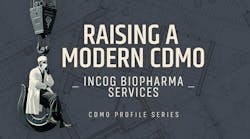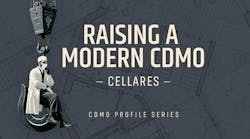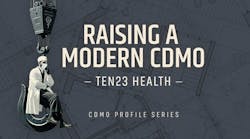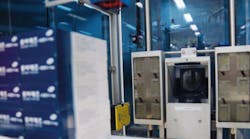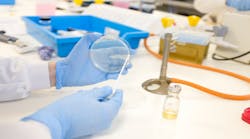High-purity water is the lifeblood of biopharmaceutical manufacturing. Given manufacturing challenges and priorities, a growing number of biopharma companies are opting to outsource water treatment, drafting service contracts with their water treatment equipment vendors.
Focusing on preventive maintenance, such arrangements can be customized to fit individual plant equipment and budgets. They can save money in the long run by extending the life of the equipment and preventing unnecessary shutdowns. Typically, the vendor services all the equipment in the plant, including those in the manufacturing and R&D laboratories as well as the wastewater treatment plant.
Equipment includes high-purity water treatment systems, membranes and filters, storage tanks and distribution pump skids. Services include re-bedding filters or ion exchange vessels, system and membrane sanitization and cleaning, replacing normal wear-and-tear components such as pump seals, ultraviolet (UV) lamps and cartridge filter elements.
Emergency service is available as part of the contract. Other services include: facility audits that evaluate current water treatment equipment and recommend improvement actions, such as upgrades or retrofits; system installation, start-up and training; water sampling and analysis; field engineering and evaluation; and mobile water treatment.
Simplifying Spare Parts Procurement
A side benefit to outsourcing water treatment can be improving management of spare parts and consumables, as well as procurement. This can help prevent customers from running out of spare parts, thus minimizing downtime. It can also be cost-effective, since it is typically less expensive to order many parts at once. “If a customer orders one part at a time, we have to issue a purchase order for each one, whereas if we can put five or six items on a single order, it saves the customer money,” says Manuel Castillo, sales engineer for Siemens Water Technologies in Puerto Rico. “The potential savings can be as high as $100 per purchase order.”
Spare parts typically include cartridge filters, meters, gauges and controls, UV systems, lamps and components.
Validation Asistance
Another important service for biopharmaceutical customers is validation assistance. A complete validation assistance program may include comprehensive validation documentation and a factory acceptance test (FAT) at the water treatment vendor’s plant.
|
Factory Acceptance Testing A biotechnology firm on the West Coast asked its water treatment vendor to provide a complete FAT, validation protocol package and on-site qualification execution. Outsourcing ultimately saved valuable time on the system qualification process. With the customer present, the vendor performed a wet test on equipment at its manufacturing facility. The vendor customized the template protocols to make them “executable” by determining proper setpoints and operating conditions, and performed any necessary troubleshooting and fine-tuning at the factory. The vendor also provided hands-on training for the client’s end user during the qualification process. The FAT saved the customer at least a week in on-site execution time so that purified water was available for manufacturing weeks before it would have been without validation assistance. |
The validation package may include functional requirement specifications, functional design specifications, software design specifications, FAT report, installation qualification protocol, operational qualification protocol and performance qualification protocol.
The more complete the validation package, the easier the validation process for the biopharmaceutical plant. The FAT is a fully functional wet test that demonstrates the system’s ability to produce the specified water quality and quantity, and ensures that the water treatment system will function properly when it arrives at the customer’s site. A typical FAT with the customer present includes operating the system with flowing water similar to site pressures, flow rates and hot water sanitization temperatures.
The test follows a written FAT protocol that normally includes:
- control system software testing
- control system hardware testing
- design documentation verification
- component and instrumentation verification
- input/output verification
- alarms-interlocks-operating sequence matrix verification
- system operator interface verification
- system security verification
- appendices containing the engineering design documents and drawings.
All test results must be documented, and contract partner resources should be dedicated during the FAT to resolve any issues before the system is shipped to the customer. Validation, engineering and quality assurance final test representatives should perform and document the verifications.
Many of the tests performed at the water treatment vendor’s factory needn’t be repeated during the installation and operational qualification at the customer’s site, thus saving valuable time.
|
Streamlining Spare Parts Ordering and the FAT A major California biotechnology company with numerous manufacturing plants in Puerto Rico wanted to improve operation and lower operating costs. With help from the company’s water treatment vendor, they were able to standardize procurement and more effectively manage the inventory of their systems’ spare parts. “Before the company entered into the contract, each of its facilities managed spare parts independently,” says Manuel Castillo, Siemens Water Technologies sales engineer. As a result, duplicates of several noncritical parts existed, while there were shortages of critical equipment, posing a risk in case of system failure. The water treatment vendor provided the customer with a recommended spare parts list for water treatment systems at all their manufacturing plants, and the customer then gave each part its own part number and decided how few or many of each part to keep. The customer entered this information into a centralized purchasing system, which is now used by each of its manufacturing plants to order spare parts. Using standard asset management tools, the spare parts are now better managed, saving inventory cost as well as purchasing administration cost. If the customer runs into an emergency situation and needs a part that is not in inventory, the vendor’s local branch can deliver that part quickly. In another case, a multinational pharmaceutical company with a manufacturing plant in Puerto Rico wanted to eliminate the risk of downtime, in case a part that wasn’t in inventory suddenly failed. The company has two USP Purified Water systems that had been upgraded several times over the past six years. The systems include multimedia filters, softeners, carbon filters, prefilters, UV lamps, a reverse osmosis system, electrodeionization system, final filters and a potable water pump skid that feeds the USP system. With a 24/7 operation, the plant stood to lose up to a million dollars a day if it had to be shut down while waiting for a spare part. Outsourcing contracts have helped minimize risk. |
About the Author
Jeff Okun is biopharmaceutical market manager for Siemens Water Technologies. Contact him at [email protected].
